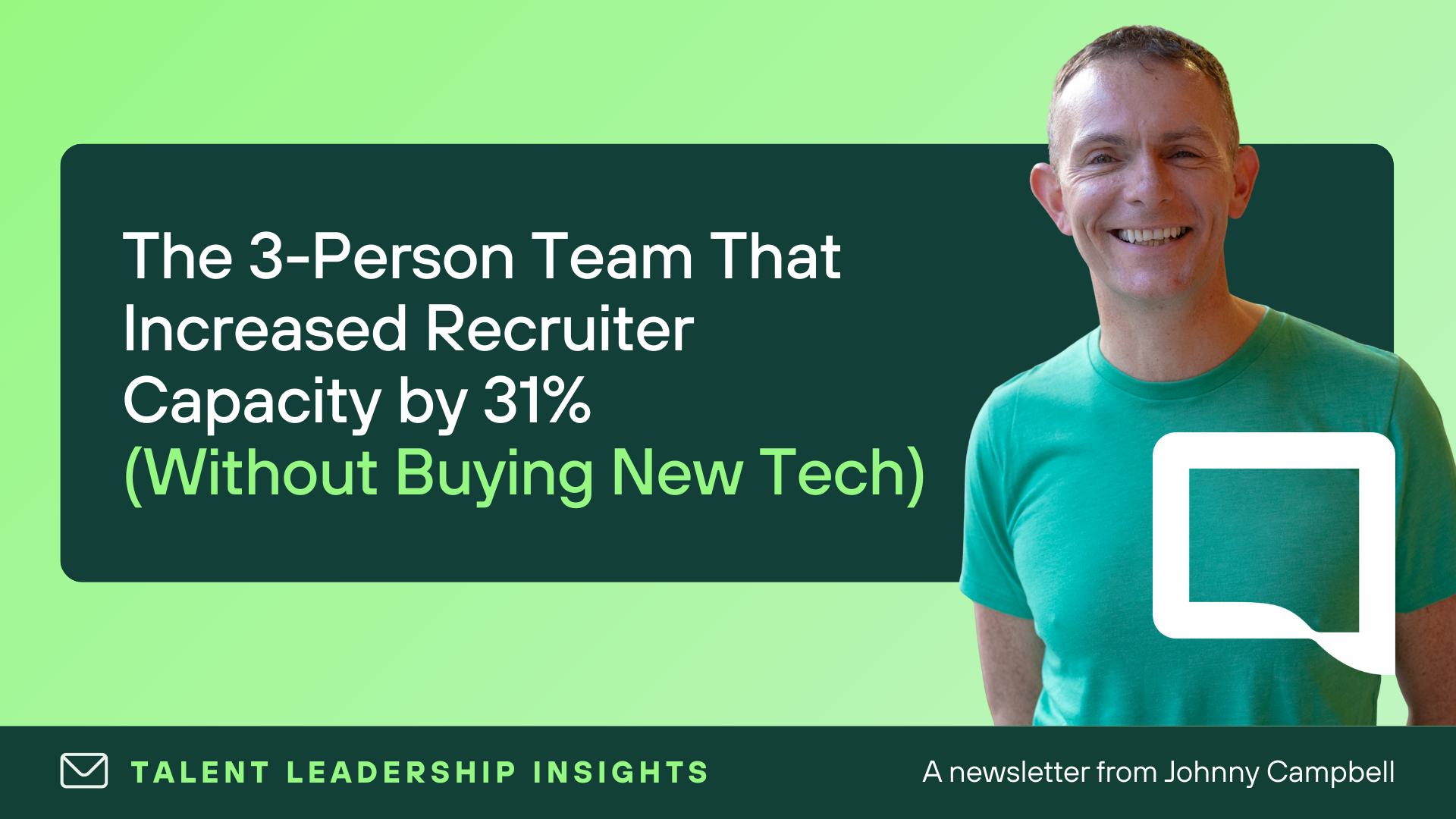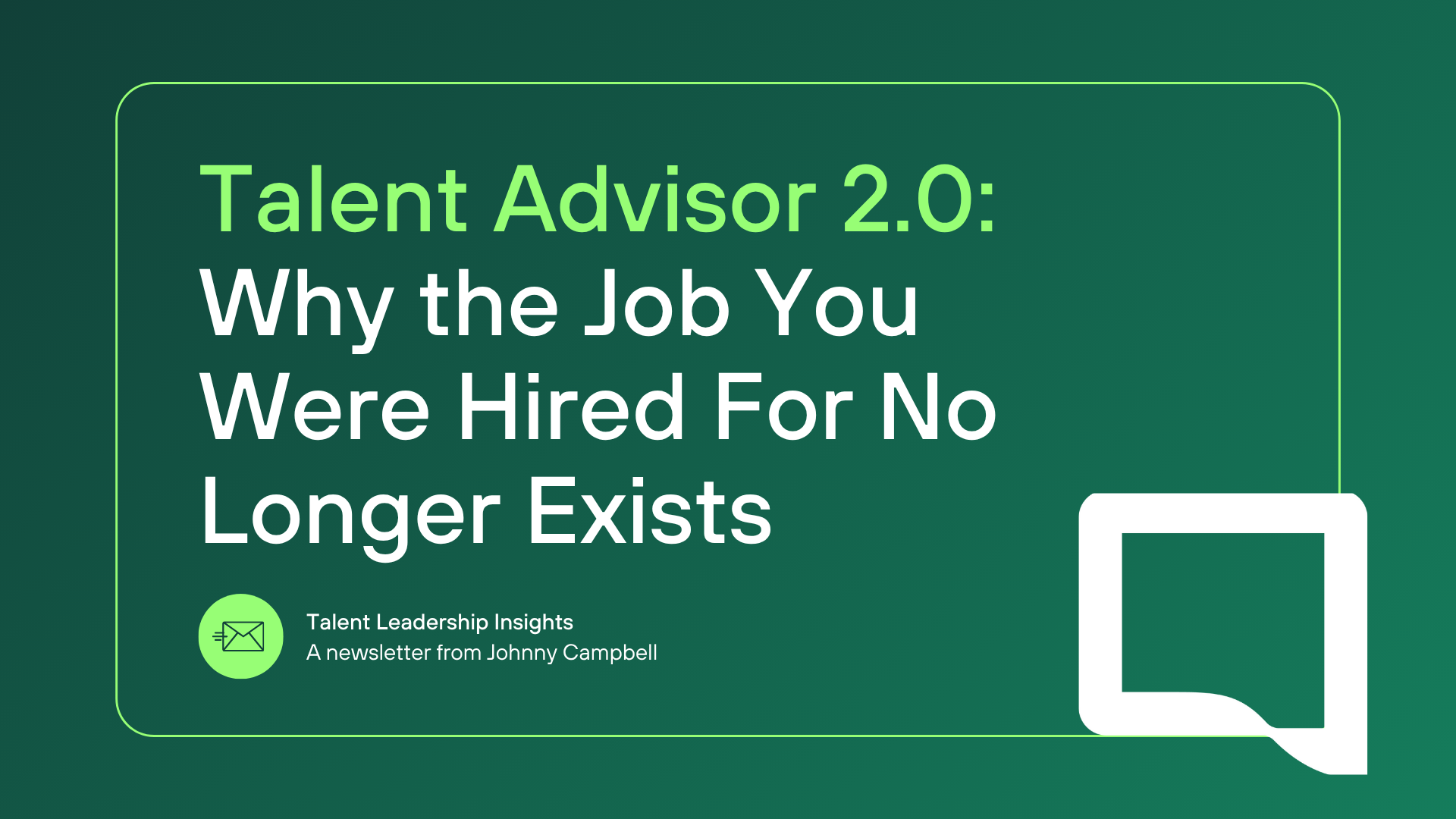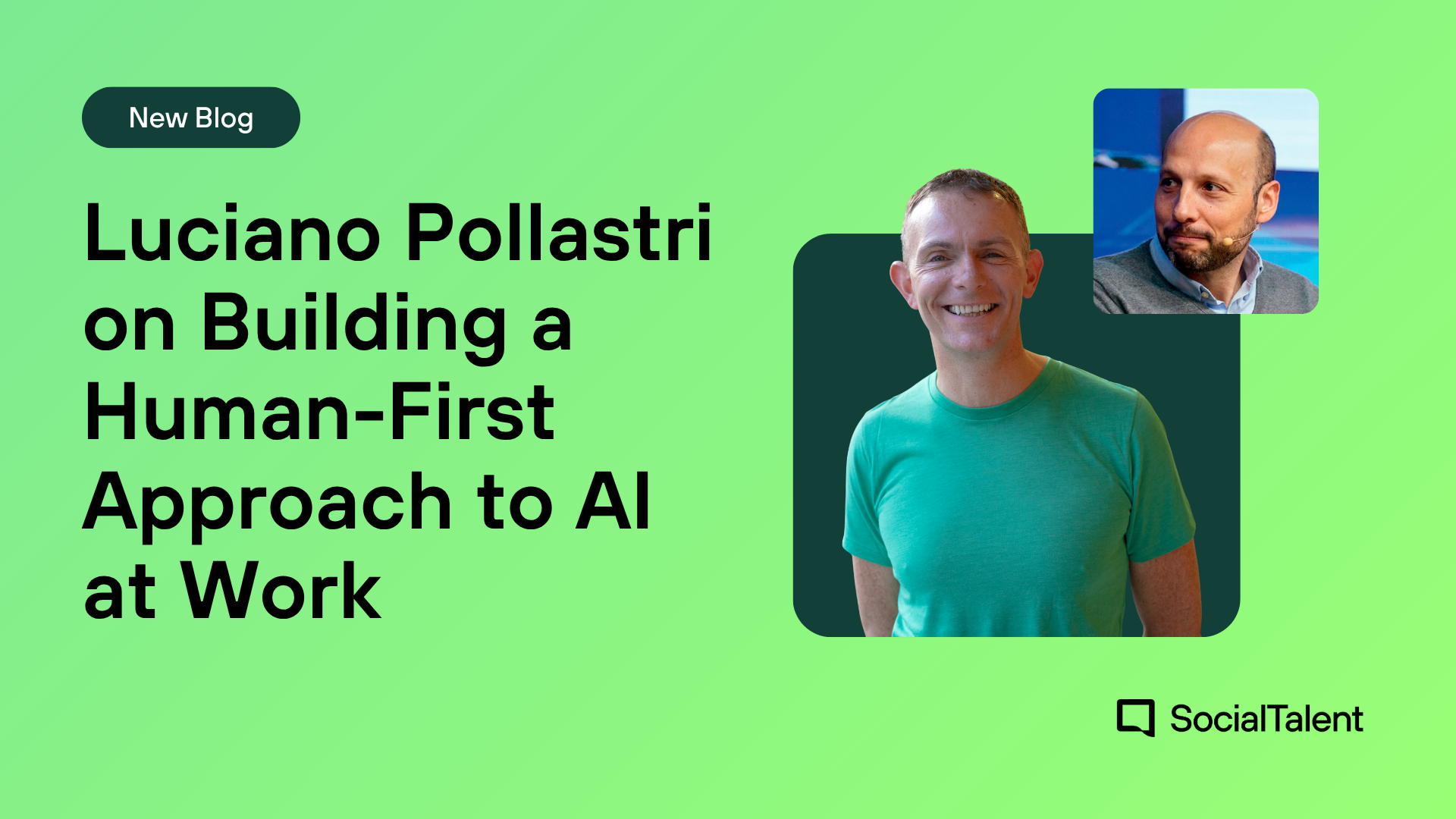I attended LinkedIn’s Talent Connect annual conference in San Diego last week, where I interviewed Hari Srinivasan, LinkedIn’s VP of Product. We were talking about Hiring Assistant and the major updates they just announced, but the conversation took an unexpected turn when Hari shared an observation that’s stuck with me the whole flight home:
“I’ve talked to thousands of recruiters, and there’s this strange thing. They light up when they talk about connecting people to opportunities. They love their job. But then you ask them to walk through their day – the systems, the tasks, the workflow – and they hate their day.”
If you’re a recruiter or TA leader reading this, you know exactly what he means. You got into this profession to help people find opportunities and build great teams. Instead, you’re spending hours copy-pasting between systems, running screening calls that don’t get past the five-minute mark, and drowning in administrative drudgery.
LinkedIn just announced three major updates to Hiring Assistant that directly attack that problem – Microsoft Teams integration for real-time collaboration, ATS connectivity for unified candidate evaluation, and automated prescreening to handle logistics questions. (I covered these features in detail in last week’s newsletter, so I won’t rehash them here.) After spending time with Hari and talking to customers using these features, I think they’ve actually cracked something most AI recruiting tools are missing: making recruiters more human, not less.
The Dichotomy: Serving Both Sides of the Marketplace
One thing that became clear in my conversation with Hari is that LinkedIn is trying to solve what seems like competing priorities: making life easier for recruiters while simultaneously making job seeking more effective for candidates.
Most platforms pick a side. LinkedIn is betting they can serve both – and that serving both actually makes each side better.
For job seekers: They’ve rebuilt job search using natural language. Instead of “Marketing Manager, London,” you can search “help me find jobs where I can use my podcasting skills” or “jobs that align with my passion for helping children learn to read.” The system shows you opportunities you’d never find through traditional title-based search, explains what skills the role requires, and shows how your profile matches up.
They’ve also added transparency tools: fit scores that help you understand if you’re actually a good match before applying, mock interviews to prepare, and coaching on how to present your best self. The result they’re banking on is that candidates will apply to fewer jobs, but better-fit jobs.
For recruiters, the same AI that’s helping candidates find better matches is helping recruiters source more precisely. But here’s the key insight Hari shared: when sourcing becomes instant, the ability to articulate what you’re actually looking for becomes critical.
This is where things get interesting.
Evidence-Based Hiring: The Real Breakthrough
LinkedIn initially launched Hiring Assistant with a typical intake flow – you put in a job description, and get back candidates. But customers kept saying, “This isn’t quite what I was looking for.”
The problem wasn’t the AI. It was that, when you can source across a billion people instantly, you need to be way more precise about what you’re looking for than when sourcing took days or weeks.
So they rebuilt the alignment process around what Hari calls “evidence-based hiring.”
Here’s how it works now:
Instead of just writing a job description, you use Hiring Assistant to pull up example profiles during your alignment meeting with the hiring manager. You show them real people and ask: “What do you like or not like about these profiles? Why?”
This forces calibration in real-time. You’re not just collecting vague requirements – you’re aligning on specific capabilities, evidence, and what “good” actually looks like.
Then, when Hiring Assistant returns candidates, it doesn’t just give you a match score. It shows you the evidence: “This person has experience with semantic search relevance because they have a patent in it, worked on it in a previous AI role, and published research on the topic.”
You’re not hiring based on job titles anymore. You’re hiring based on demonstrated capabilities – and you can see and explain exactly why someone matches.
As Hari put it: “Hiring Assistant found candidates, customers say they never would have imagined finding otherwise. That’s because it’s looking across all kinds of different evidence, not making axe-like cuts based on title.”
This is the practical implementation of skills-first hiring that the industry has been talking about for years. And it’s working because of the transparency; both recruiters and candidates can see and understand the matching logic.
The Results: When Recruiters Get Their Days Back
The early data from Hiring Assistant customers is striking:
- 70% reduction in profiles viewed to get to a shortlist
- Nearly 70% increase in InMail acceptance rates
- Customers saying, “I can’t go back to the way things were before”
That last one is what matters most to me as someone who’s spent 25 years in this space. When people can’t imagine going back, you’ve solved a real problem.
Erin Scruggs, LinkedIn’s VP of Global Talent Acquisition, shared a quote on stage that captured this perfectly. One of her recruiters described their new morning routine: making a cup of coffee and sitting down to review the work Hiring Assistant had already started that morning.
That’s the shift. Not replacing the recruiter, but giving them back their mornings to do the work they actually care about – building relationships, closing candidates, making great matches.
The Two-Sided Transparency Play
What I find fascinating about LinkedIn’s approach is how the same core technology is creating better experiences on both sides.
Candidates get transparency about what roles actually require, how they match up, and how to improve their fit. This helps them apply more strategically and prepare more effectively. The result: fewer but better-quality applications.
Recruiters get transparency about why candidates match, what evidence supports that match, and how to refine their search. This helps them source more precisely and evaluate more confidently. The result: faster time to shortlist with better candidates.
The priorities seemed dichotomous (wouldn’t helping candidates apply to fewer jobs reduce recruiter pipeline?), but they’re actually complementary. Better-matched candidates who apply thoughtfully are exactly who recruiters want to see.
And the explainability matters on both sides. Candidates want to understand why they’re a fit (or not). Recruiters need to explain to hiring managers why they’re recommending someone. The mysterious black-box ranking scores that some AI tools use frustrate everyone.
As Hari said, “No one is taking a job without talking to another human. If you can’t explain why you’re reaching out and why you care, that person isn’t going to want to engage with you.”
The Enterprise Challenge
One thing that came up in our conversation that I think is worth highlighting: building AI products for enterprise customers (with all their security, compliance and scale requirements) is incredibly hard.
At SocialTalent, we’re building enterprise-level Interview Intelligence, so I feel this pain personally. The front-end UI that most people see is arguably the easy part. The backend security, compliance frameworks, data governance, integration capabilities – that’s where most startups stumble or can’t scale.
LinkedIn has the advantage of years of trust, existing security infrastructure, verified identities, and deep integration with the Microsoft ecosystem. When Hari talks about how they’ve been able to roll out AI features across nearly every customer, it’s because they’ve maintained those core principles around data security and customer trust.
This is also why the Teams integration is more significant than it might seem. For enterprise customers, having AI recruiting tools work within their existing collaboration platforms—with all the security and compliance already sorted – removes massive barriers to adoption.
What This Means for Your Team
If you’re a LinkedIn Recruiter customer, here’s what I’d encourage you to do:
1. Start With Calibration
Use Hiring Assistant during your alignment meetings. Pull up example profiles. Force precision about what you’re actually looking for. This upfront investment pays off massively in the quality of candidates you surface.
2. Embrace Evidence-Based Evaluation
Stop defaulting to title-based screening. Look at the evidence Hiring Assistant surfaces – the patents, the project experience, the demonstrated capabilities. You’ll find people you’d have filtered out based on title alone.
3. Leverage the Teams Integration
If you’re using Microsoft Teams (and most enterprises are), get Hiring Assistant working in your collaboration flow. The reduction in context-switching and coordination overhead is real.
4. Connect Your ATS
The unified candidate view across LinkedIn and your ATS isn’t just convenient – it’s how you get smarter matching and faster decision-making.
5. Use Prescreening Strategically
Let Hiring Assistant handle the basic logistics questions. Save your time for the conversations that actually matter – assessing capability, exploring potential, building relationships.
The Bigger Picture: AI That Makes Us More Human
Standing here at Talent Connect, watching these announcements and talking to customers, I keep coming back to that quote about recruiters loving their jobs but hating their days.
The best AI in recruiting isn’t about automation for automation’s sake. It’s about removing the drudgery so humans can focus on the parts of the job that require human judgment, empathy, and connection.
LinkedIn seems to understand this. They’re not trying to replace recruiters or remove hiring managers from the process. They’re trying to give people back their days so they can do the work they actually care about.
This isn’t about productivity, it’s about capacity. Productivity gains suggest people just get more time back to take longer lunches or finish early. Capacity is about using that time to fill more roles, recruit better or do both! AI offers TA leaders the ability to rethink recruiter capacity, not productivity. But that’s a conversation for a whole other newsletter!
Are you using LinkedIn Hiring Assistant? What’s working for you? What questions do you have about these new features? Let me know in the comments. I would love to hear your experiences.























